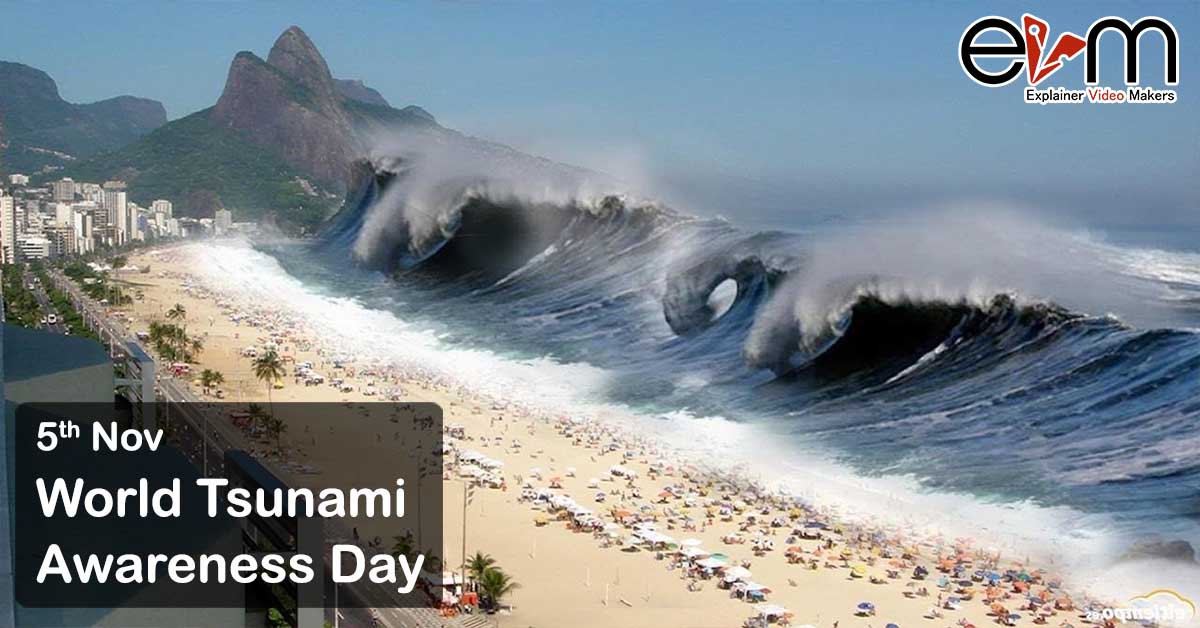
5th Nov: World Tsunami Awareness Day
Tsunamis are rare events but can be extremely deadly. In the past 100 years, 58 of them have claimed more than 260,000 lives, or an average of 4,600 per disaster, surpassing any other natural hazard. The highest number of deaths in that period was in the Indian Ocean tsunami of December 2004. It caused an estimated 227,000 fatalities in 14 countries, with Indonesia, Sri Lanka, India and Thailand hardest-hit.
Just three weeks after that the international community came together in Kobe, in Japan’s Hyogo region. Governments adopted the 10-year Hyogo Framework for Action, the first comprehensive global agreement on disaster risk reduction.
They also created the Indian Ocean Tsunami Warning and Mitigation System, which boasts scores of seismographic and sea-level monitoring stations and disseminates alerts to national tsunami information centers.
Rapid urbanization and growing tourism in tsunami-prone regions are putting ever-more people in harm’s way. That makes the reduction of risk a key factor if the world is to achieve substantial reductions in disaster mortality – a primary goal of the Sendai Framework, the 15-year international agreement adopted in March 2015 to succeed the Hyogo Framework.
In December 2015, the UN General Assembly designated 5 November as World Tsunami Awareness Day.
World Tsunami Awareness Day was the brainchild of Japan, which due to its repeated, bitter experience has over the years built up major expertise in areas such as tsunami early warning, public action and building back better after a disaster to reduce future impacts.
The date for the annual celebration was chosen in honor of the Japanese story of “Inamura-no-Hi”, meaning the “burning of the rice sheaves”. During an 1854 earthquake, a farmer saw the tide receding, a sign of a looming tsunami. He set fire to his entire harvest to warn villagers, who fled to high ground. Afterward, he built an embankment and planted trees as a buffer against future waves.
The UN General Assembly has called on all countries, international bodies and civil society to observe the day, in order to raise tsunami awareness and share innovative approaches to risk reduction. It also asked the UN Office for Disaster Risk Reduction (UNISDR) to facilitate the observance of World Tsunami Awareness Day in collaboration with the rest of the United Nations system.
World Tsunami Awareness Day Theme in 2020
Another report in the UNESCO website reveals that the World Tsunami Awareness Day will be structured as a 30-day campaign. The key events will be focused on Global Target E of the Sendai Framework: Substantially increase the number of countries with national and local disaster risk reduction strategies by 2020. During this campaign, a specific focus has been provided on two key components essential to the setup and effective maintenance of risk reduction strategies and their adoption by vulnerable communities: scientific expertise and indigenous knowledge and memory.
By the year 2030, an estimated 50 percent of the world’s population will live in coastal areas exposed to flooding, storms, and tsunamis.
Investing in resilient infrastructure, early warning systems, and education is critical to saving people and protecting their assets against tsunami risk in the future.
hashtags: #WorldTsunamiAwarenessDay #Tsunami #Plan2Survive

 We can help you.
We can help you. 